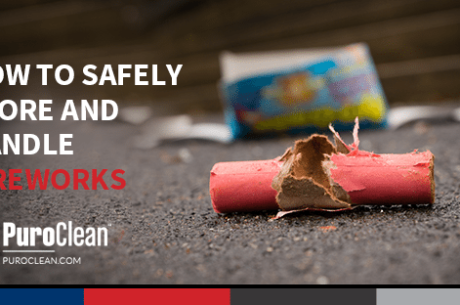Week two of National Preparedness Month
Be prepared for an emergency!

How to Make an Emergency Kit
An emergency kit is a collection of basic supplies you and your family may need in the case of emergencies or a disaster. The kit should contain food, water, and other items you may need to survive when you have to evacuate your home or live without basic services for several days. When a disaster strikes, you probably won’t have the time to gather all the supplies in a kit. Thus, it’s important to create the kit in advance and keep it in a safe but easy-to-reach place.
A basic emergency kit should include:
- Water for drinking and sanitation to last at least 3 days; one gallon of water per person per day should suffice; sick people, children or nursing mothers may need more water, though;
- Non-perishable food for at least 3 days; foods that make you thirsty should be avoided;
- A first aid kit that may include prescription medication, scissors, tweezers, cloth tape, antibiotic ointment, adhesive bandages, non-latex gloves, etc.;
- Hand crank or battery-powered radio (tuned in to NOAA Weather Radio), as well as spare batteries;
- Flashlight with extra batteries;
- Whistle to call for help;
- Dust mask, plastic sheeting and duct-tape for shelter making;
- Moist towelettes and garbage bags for sanitation;
- Pliers or a wrench to turn off utilities;
- Can opener;
- Local map(s);
- Cell phone with an extra charger.
Optional items to include in an emergency kit:
- Essential documents, such as IDs, birth certificates, bank account records or insurance policies;
- Extra clothes, warm blankets, and sleeping bags if the climate you live in is usually cold;
- An extra pair of glasses;
- Infant formula and diapers;
- Matches to light a fire;
- Personal hygiene items for women;
- Plastic plates, cups, and cutlery;
- Games, books and other items to pass time.
Other tips:
- Keep an emergency kit at home, work and in your vehicle in a designated place. At home, make sure all family members know where the kit is.
- Put the kit in one or more containers, such as a backpack or suitcase with wheels. Keep all sensitive items in the kit in airtight plastic bags to protect them.
- Keep the food in a non-humid, cool place. Replace any foods that have gone bad or cans that have swollen. Replace water and food supplies every 6 months.
- Throughout the year, maintain and update your kit, according to your family’s needs.
- Emergencies can strike when you least expect it. Make sure your family knows how to reach each other, and choose a safe meeting spot.
- Create an emergency contact list that includes family, close friends, doctors, local services like police, fire and utility companies. The internet may be not be available in the case of national emergencies or disasters.
Remember that creating a family evacuation plan and preparing your home for emergencies are also very important in protecting your family and your property in the event of a disaster. Don’t just make a plan, practice it! Regular drills at home or work help everyone stay calm and act fast when emergencies occur.
When emergencies strike, PuroClean Certified Restoration responds fast with certified experts who care! From the first call to the final step, we restore more than property, we restore peace of mind.
For professional fire, smoke, flood or mold restoration services, contact PuroClean Certified Restoration at (541) 286-3111

